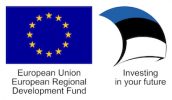Interviews

Darko Gavrilović
Professor of History, Novi Sad
Darko Gavrilović is a history professor at the Faculty of Science in Novi Sad, Serbia. He is the director of the Center for History, Democracy, and Reconciliation in Novi Sad and the chief editor of the journal “Serb-Croat Relations in the 20th century”.
Darko was a visiting professor at the Charles University Prague, the University of Lodz, the Jagiellonian University, and the Aristotle University of Thessaloniki. Darko’s research interests predominantly include Serb-Croat political relations in the 20th century, political myths, and cultural studies.
In this interview he shares some of his thoughts about heroes and heroization processes and political myths in the context of the Covid-19 pandemic and the War in Ukraine.
The earlier interview with Darko Gavrilović can be found here.
- The fifteenth international gathering “Serb-Croat relations in the 20th century” will take place from the 24th until the 29th of August 2022. This year the topic is heroes and political myths in cultural memory. What inspired the choice of this topic?
- What is the significance of myths and heroes nowadays, especially when we take into account the context of the Covid-19 pandemic and the War in Ukraine?
- Crises inevitably result with an intensified circulation of conspiracy theories and myths. Could you point out some myths that were prevalent in Croatia and Serbia during the Covid-19 pandemic?
- The War in Ukraine evokes memories of the 1990s Yugoslav Wars. The mobilization of memory, among other practices, can serve to promote various political agendas, facilitate community belonging, but also group antagonism. What are some of your observations related to the aforementioned?
- Though crises often lead to instability and uncertainty, they can also generate positive change, new insights, and perspectives. How do you observe crises and their educational potential?

